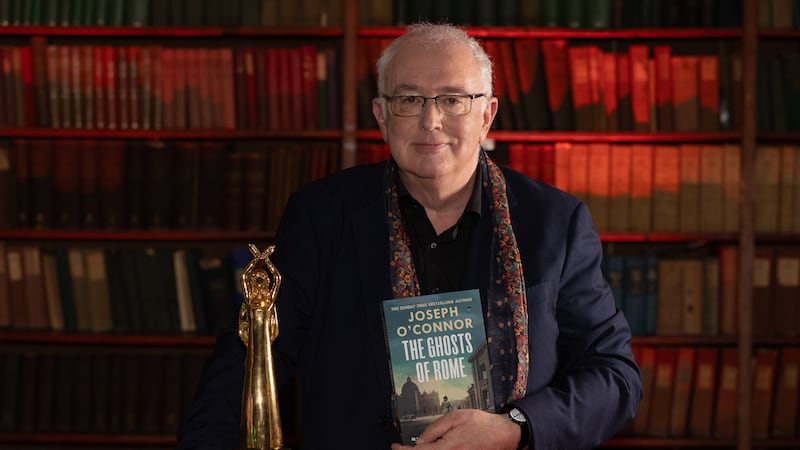Glamping on the banks of the Boyne at Slane, Co Meath, on Saturday night, I was reminded what a staggeringly beautiful setting for a village that is. Historic too, of course.
Our campsite was on the right bank of the river – the Jacobite side during the famous battle of 1690, which happened a few miles east of Slane. But it was hard to imagine this had ever been a place of conflict as peace came dropping slow on the steep, wooded hills. The only threat we faced at the weekend was from an army of insects that invaded the tent overnight.
An indirect effect of 1690 was to change ownership of the local castle, of which we had fine views across the water. Perhaps ironically for a battle won by a Dutch king, the big losers included a family called the Flemings.
They had previously lost castle and lands in the confiscations following the 1641 rebellion, before regaining royal favour in subsequent decades. Then they ended up on the wrong side of history again in 1690. The Conyghams – an Ulster plantation family, ancestors of the late Henry Mount Charles – acquired the estate soon after.
READ MORE
The loveliness of the setting is matched by Slane itself, a model of 18th-century British town planning and still dominated by handsome stone buildings. In keeping with its left-bank setting, the village now has a self-deprecatingly declared “arty quarter”.
And it all looked rather idyllic on Saturday night, especially the view down on the old bridge, as the sun set on the river and on its adjoining canal, which used to serve the biggest mill in Ireland, now a hotel.
I haven’t always appreciated Slane’s beauty. Before the M1, it used to be the halfway point on the journey between my hometown (Carrickmacross) and Dublin: a route that, north of Slane at least, is notoriously hilly and winding.
As a child and later, I was prone to car/bus sickness, especially on morning trips. Slane tended to mark the full onset of nausea. From there on, it was a grim battle to retain my breakfast as far as Dublin.
Sometimes, having reached the outskirts of the city but unable to trust myself for another 20 minutes of lurching through traffic, I would decamp from the bus at Finglas for fresh air and resume the journey on a 19A.
[ A life’s work reviving the Irish language - Oliver O’Hanlon on Liam Ó BriainOpens in new window ]
It could have been worse. Even back then, the road from Slane to Dublin was relatively flat and very straight. This was in part a reflection of different terrain. But it was also – according to oral tradition – a legacy of the fact that King George IV had his favourite mistress in Slane Castle.
Hence, during his Irish royal visit of 1821, he made a beeline for there, the road smoothed in advance, and spent most of the trip in her company, to the chagrin of Irish loyalists elsewhere.
The mistress in question was Elizabeth Conygham, maternal forebear of Lord Henry. She was married and a mother of several children. But being consort of the monarch was a semi-respectable career in former centuries, so she used it to advance the family’s wealth and status, her husband becoming a marquess as part of the deal.

After serving time as one of the assistant mistresses, she ousted Isabelle Seymour-Conway, Marchioness of Hertford, from the main job in about 1820, just as the then prince ascended to the throne. And although she was hitting 50 and he a decade older, the new king was besotted. He was said to be “nodding and winking” at her throughout the coronation ceremony.
For ordinary people, such an ancestral inheritance might be an embarrassment, to be spoken of in whispers if at all. But the aristocracy are not like us.
On a visit to Slane Castle after the recent funeral (the whole congregation was invited back, including journalists), I was amused to see that a giant portrait of George IV is still a centrepiece of the ballroom. In fact, it was one of the treasures saved during the 1991 fire, when Lord Henry cut the canvas from the frame just before flames gutted the place.
In fairness, the castle also displays a pair of cartoons satirising the couple, who enjoyed high living as well as each other and were both somewhat corpulent as a result – a detail the caricaturists exaggerated.
According to The Irish Aesthete (a website curated by my former Irish Times colleague Robert O’Byrne), the extent to which the king’s Irish visit was dominated by his Slane lover inspired much mockery. One satirist commented in verse: “Tis pleasant at seasons to see how they sit/First cracking their nuts, and then cracking their wit/Then quaffing their claret – then mingling their lips/Or tickling the fat about each other’s hips.”
In any case, according to legend, the affair left its mark on Irish transport infrastructure. The course of true love may never have run smooth, according to Shakespeare. But the road from Dublin to Slane seems to be an exception.

















